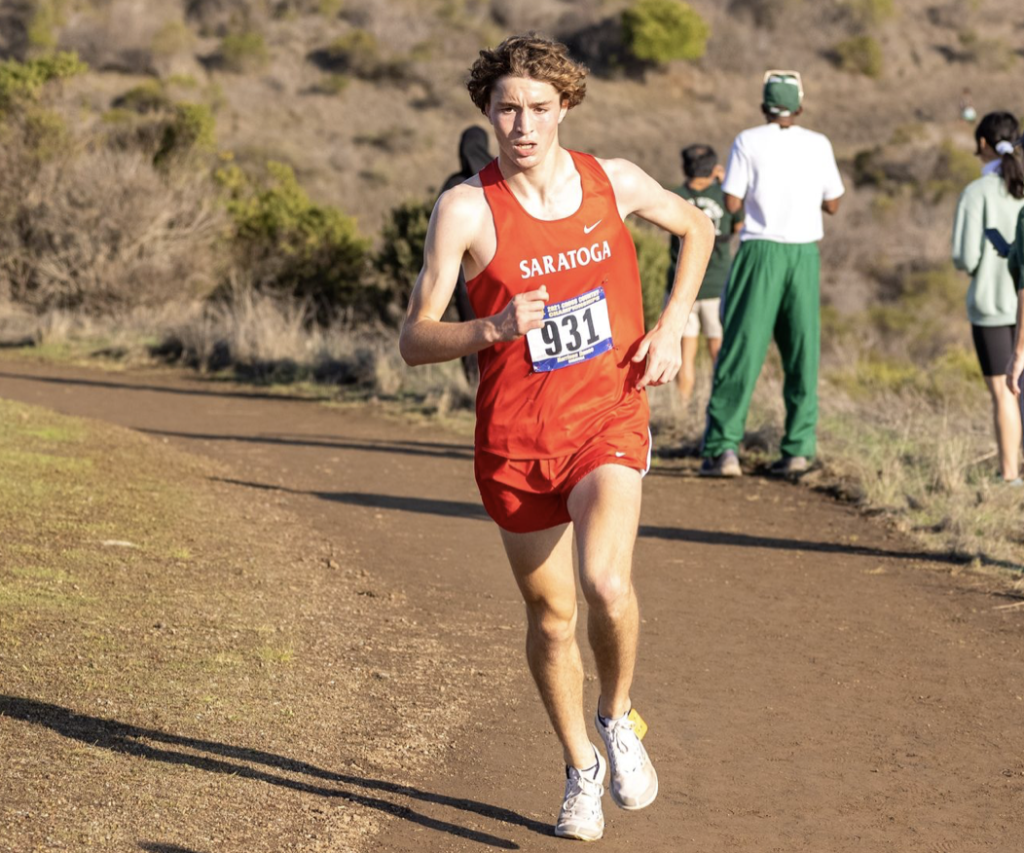During the four years that Class of ‘22 alumnus Harrison Dance ran cross country and track and field here, he set a school record in the 1600 meters with a time of 4:12.09 and achieved an impressive 9:15.20 in the 3200 meters. In cross country, he attained a personal record of 15:28 in his senior year for the 5000 meters and won the CCS championship in his division twice.
These accomplishments helped him earn a spot on UCLA’s Division I cross country and track team, where he has meshed well with the team and is enjoying a higher level of competition accompanied with more strenuous training.
“Over the last few months, I’ve gotten close to my teammates and it is nice to have a good group of people to run with,” Dance said.
In high school, Dance would run 35 to 50 miles per week with one rest day. As a freshman for the Bruins, he has scaled up to nearly 70 miles per week with no rest days. On a weekly basis, Dance does two high-intensity workouts, one on Tuesday and another on Friday, which include interval repeats, tempo runs and hill repeats. Generally, one workout is more speed-oriented while the other is more endurance-oriented.
For example, the speed workout could be 10 repetitions of 400 meters at Dance’s mile pace, while the endurance workout could be a 5-mile run at Dance’s tempo pace, meaning 80% effort and moderate-to-hard intensity. He also does four aerobic runs per week, which range from 9 to 12 miles. Sundays are primarily reserved for his longest runs that span between 13 to 15 miles.
“My coach, Sean Brosnan, frequently places an emphasis on putting in an adequate amount of effort during high-intensity workouts,” Dance said.
Despite accelerated improvement from consistently training with faster runners — something he could not do in high school — Dance was unable to race during his freshman cross country collegiate season after suffering a tibia stress fracture injury in August. He believes this was likely a result of overtraining during his 2022 summer training while not prioritizing rest and recovery from his daily runs.
“In the future, I plan to prioritize recovery to avoid getting injured by eating a balanced diet and getting eight to nine hours of sleep per night, which can be tough considering my academic workload,” Dance said.
His injury had forced him to not only miss all his races, but also miss almost three months of in-season training. During his recovery process, Dance was unable to run, but avoided significantly losing running fitness with other forms of training such as aqua jogging, swimming and upper body strength training.
This also strengthened his glutes, hips and upper body muscles, which Dance felt was beneficial especially since he inadequately trained these muscles during his high school years — he believes he can see major long-term improvements if he continues working on them.
With Dance now being completely recovered from injury, he is cleared to race during his outdoor track and field season. Dance’s first outdoor race will occur in late March.
“Although I want to set personal records during the track season, I don’t have any time-specific goals. I just want to enjoy time with my team and enjoy the process,” Dance said. “If I do that, it will be easier for me to see significant time improvements.”
























